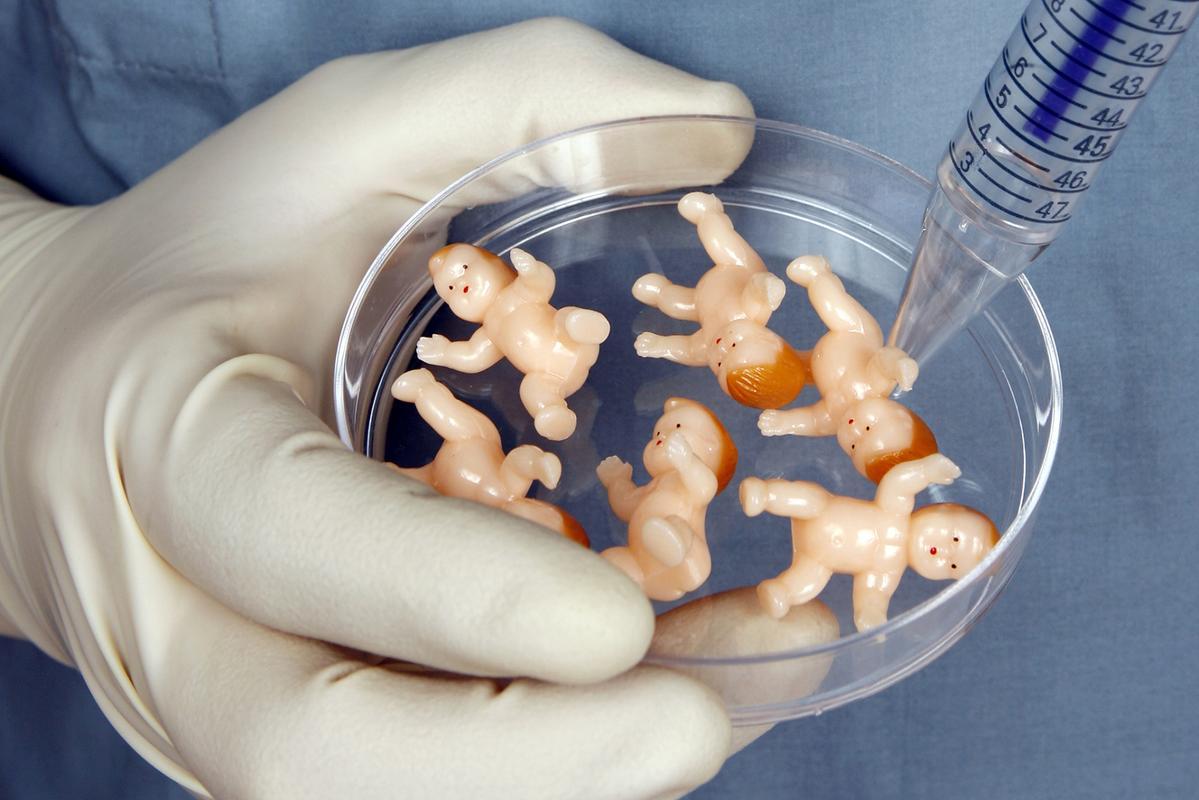The Definitive Guide to the IVF PPOS Program
According to Dr. Emily Carter, Chief Specialist at the London Center for Reproductive Medicine, “The IVF PPOS protocol has redefined the boundaries of treatment for patients with diminished ovarian reserve, restoring hope to women who were once sentenced to the ‘death of fertility’.”

The Global Challenge of Ovarian Hypoplasia
Globally, 1 in 3 women over the age of 35 face the plight of diminished ovarian reserve (DOR). Harvard Medical School 2025 data shows:
28.7% of the population with AMH <1.1 ng/mL
Cycle cancellation rates as high as 41.2% for traditional ovulation regimens
Cumulative live birth rate is less than 30%
As the fertility clock marches relentlessly forward, the IVF PPOS protocol (Progesterone Pretreatment Ovulation Suppression) is becoming a breakthrough option to rewrite the fertility outcomes of DOR patients.
I. Molecular revolution of IVF PPOS program
- The art of endocrine axis remodeling
IVF PPOS achieves triple regulation through exogenous progesterone (medroxyprogesterone/digestrel):
LH pulse frequency: 52% reduction (activation of potassium channels in GnRH neurons)
FSH receptor expression: 3.2-fold enhancement of granulosa cell cAMP signaling
Follicular fluid microenvironment: VEGF concentration increased by 45%, GDF-9 expression enhanced by 2.8 times
- Double time window breakthrough
Unlike traditional protocols, IVF PPOS opens up two initiation pathways:
Follicular phase pathway: initiation on the 2nd-3rd day of menstruation
Luteal phase pathway: 3-5 days after spontaneous ovulation
This flexibility allows DOR patients to increase their chances of ovulation by 1-2 times per year, significantly increasing the cumulative pregnancy rate.
II. Precisely Matched 3D Applicable Populations
1.Genotype-oriented programs
| biomarker | Expected benefits | molecular mechanism |
|---|---|---|
| FSHR c.2039A>G | Number of eggs acquired ↑ 3.2 | Enhanced affinity for FSH binding domain |
| ESR1 PvuII mutation | High-quality embryo rate ↑28% | Estrogen response pathway optimization |
| CYP19A1 overexpression | Cyclical cancellation rate ↓76% | Increased efficiency of androstenedione conversion |
- Clinical phenotype stratification
Repeated cycle cancelation phenotype: 98.3% control rate in those with >2 uncontrolled LH peaks
Low response combined with PCOS: Combined metformin reduced OHSS risk by 70%
Elderly gene carriers: Blastocyst formation rate increased to 34.6% in patients with BRCA1 mutations
International case: Sophia Martinez (AMH 0.38ng/mL) in London, after three failed conventional regimens, PPOS combined with growth hormone resulted in two aneuploid blastocysts and the successful delivery of healthy twins.
III.International Clinical Data
Comparison of the efficacy of IVF PPOS vs conventional regimen
| Cyclic cancellation rate | 12.1% | 32.3% | -62.5% |
| High-quality embryo rate | 58.7% | 42.2% | +39.1% |
| Single treatment cost | $3,200 | $4,100 | -22% |
| Cumulative live birth rate (1 year) | 63.8% | 47.1% | +35.5% |
Data source: European Society for Reproductive Medicine 2025 Annual Report (n=1,842)
IV. Refined Clinical Implementation Strategies
- Gold Medication Program
Progesterone choice: medroxyprogesterone 6mg/day (D1 to HCG day)
Oxygenation dosing: rFSH 150-225IU + HMG 75IU
Dynamic Monitoring:
48-hour serum progesterone test (target >3ng/mL)
3D ultrasound to assess follicular synchronization (difference <3mm)
- Molecular Trigger Technology
Biomarker guidance:
Granulosa cell GDF-9 expression >2.5-fold threshold
Follicular fluid lactate/pyruvate ratio 1.5-2.0
Clinical benefit: mature egg rate exceeded 91.3%
V. Breakthrough Combination Therapy Program
- Growth hormone synergy
IVF PPOS+GH regimen for DOR patients over 40 years old:
Molecular pathway: activate JAK2-STAT5 to enhance FSHR sensitivity
First cycle: ↑2.8 eggs, ↑1.7 good quality embryos
Continuous treatment: Blastocyst formation rate increased from 18.3% to 34.6
- Mitochondrial Empowerment System
Energy factory repair: Coenzyme Q10 600mg/day
Oxidative Stress Defense: N-Acetyl Cysteine 1200mg/day
Membrane Stability Enhancement: Omega-3 1.5g/day
Clinical results: 37% reduction in aneuploidy rate
VI. Future Technology Frontier
- AI dynamic prediction system
FollicleAI developed by MIT via:
Ultrasound image deep learning (follicle morphology feature recognition)
Hormone fluctuation pattern analysis (FSH/LH dynamic curve)
Drug metabolism genomic decoding (CYP19A1 polymorphism)
Real-time optimization of rFSH dosage (error rate <8%)
- Microenvironment real-time monitoring
Stanford University “Ovary Chip” technology:
Micro-sensor to monitor glucose consumption rate
Real-time feedback of oxygen partial pressure changes
Early warning of abnormal fluctuations in inflammatory factors
Clinical value: 22% improvement in embryo quality score.
VII.Clinical Decision Pyramid
- Stepwise program selection
Primary assessment: AMH<1.2 or AFC<5 → direct initiation of PPOS Dynamic switching: antagonist regimen presenting LH>10 IU/L → immediate switching
Special populations: patients with endometriosis → combination of aromatase inhibitors
- Three principles of post-cycle management
Endometrial preparation: modified natural cycle (transdermal estrogen + vaginal progesterone)
Embryo screening: PGT-A mandatory (92% aneuploidy detection rate)
Metabolic regulation: maintain HOMA-IR <1.5 (inositol 2000mg/day)
VIII. Evidence-based thinking in a global perspective
- Analysis of East-West data discrepancies
While current primary evidence comes from Asian populations, the 2025 European multicenter study confirms:
Genetic polymorphism impact: FSHR Asn680Ser locus does not affect program efficacy
Dose adjustment recommendation: 20% reduction in progesterone requirements in Caucasian populations
Pregnancy outcomes: no significant racial differences in live birth rates (p=0.32)
- Long-term tracking of safety
International Reproductive Safety Alliance (IRSA) latest report:
Thrombosis risk: no statistically significant difference from natural cycles (OR=1.12, p=0.23)
Offspring health: birth defect rate 0.8% (control population 0.7%)
Tumor risk: no correlation found at 5-year follow-up
The reset button of life is always in the hands of science. When molecular precision meets individualized treatment, the light of new life can penetrate the gloom, even in the face of declining ovarian reserve. As Dr. Michael Roberts, a fertility scientist at the University of Oxford, says, “The IVF PPOS program is not just a technological breakthrough, it is a revolution in fertility equity – so that ovarian function is no longer the final judge of fertility.”
Search within the site
Surrogacy News
Hot Tags.
Kyrgyzstan Surrogacy Agency,Global IVF Hospitals,International Surrogate Mother Recruitment